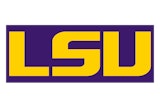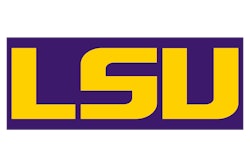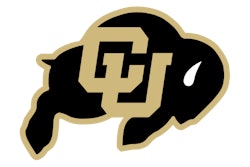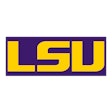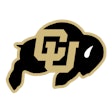![[Photo courtesy of Jeff Springer, University of Alabama]](https://img.athleticbusiness.com/files/base/abmedia/all/image/2021/03/ab.laundry1021_feat.png?auto=format%2Ccompress&q=70&w=400)
Laundry is a 24/7 business in college sports.
"There's not an off day in laundry," Jeff Springer, associate athletic director of equipment services at the University of Alabama, says. "Every day somebody's using something, and something's getting dirty that's got to get cleaned."
In Tuscaloosa, equipment managers across multiple campus facilities are using 15 washing machines and 17 dryers that can process more than 1,000 pounds of laundry daily. Springer says keeping the operation afloat requires proactive maintenance, organization and good relationships between operators and the companies helping them.
The hardest day
A lot of factors can throw a wrench in the usual machinations for managing uniforms and equipment, especially weather, which Springer says can bless or complicate the job.
"I remember 2015, we played at Georgia, and it monsooned that entire football game. I've never been in a game where there's been that much rain," says Springer, who brought nearly a decade of equipment services experience to the Crimson Tide staff in 2010. "I don't know how many inches fell during that game, but it constantly poured for four quarters, during pregame and everything."
Everything worn on the sidelines was drenched with rain and infused with mud, Springer says. Collecting and transporting the heavy garments added difficulty, let alone getting everything turned around and clean for the next event.
"Just trying to transport everything back, get the stains out of everything, everything that the coaches wore on the sideline, everybody's shoes are soaking wet, just water-logged," he says. "You've got stuff laid out all over the place with floor fans in front of it, trying to dry out shoes, rain suits, everything. That's miserable. That's probably the hardest day since I've been here."
But the Tide rolled over Georgia on the wet field that day, and eventually the equipment team gained another win, too, making everything happen behind the scenes to get the team's uniforms dry, clean and back out on the field looking brand new at the next game.
Looking brand new
Terry Hammond has worked closely with equipment managers and athletics laundry room operators for 16 years at UNX Inc., which makes professional cleaning products for laundry operations. He says making sure the team is looking great on game day is a point of pride.
"People are surprised when they're watching a Major League Baseball game, or when they're watching a college football game, that the players are not wearing brand new uniforms," says Hammond, national director of athletic sales at UNX.
Hammond says keeping team uniforms looking brand new starts with knowing what kind of paints and dyes are on the field. Another part of combatting stains and odors is understanding how they can sneak by in modern uniforms.
"Uniforms used to fit loose, now they fit tight," Hammond says. "It's a spandex polyblend-type material so that when you pull a pair of football pants off a 350-pound man, it looks like that pair of pants could fit a 6- or 7-year-old. When they go on the football player, they're stretched. The common problem that we have is that whatever soil or whatever stain they encounter becomes trapped in the uniform." Hammond says UNX has developed processes to remove the stains while the uniform is relaxed and off the athlete.
Staff in the laundry stretch the uniform, and chemicals are used to release field paint, field dye, clay and turf stains. Trapped odors can also be released during the process.
"If you wear a dry-fit shirt for 20 days in a row and wash it every day, you're still going to trap in some of that odor," Hammond says. "It's essentially dead skin that gets trapped in between the fibers and the dry-wick material. It's called sebum. Then that causes bacteria growth, so we try to clean it and get it out."
When it comes to stains, Springer says the Alabama equipment staff keeps teams looking crisp-white and crimson using a few simple products.
"In football, we have one product that we use from our laundry chemical company for grass stain removal, but then we also use Clorox bleach powder and just your regular Shout spray bottle," Springer says. "And that works wonders. Some people don't realize we're using some household stuff on that too."
![[Photo courtesy of Jeff Springer, University of Alabama]](https://img.athleticbusiness.com/files/base/abmedia/all/image/2021/03/ab.laundry1021a.png?auto=format%2Ccompress&fit=max&q=70&w=400) [Photo courtesy of Jeff Springer, University of Alabama]
[Photo courtesy of Jeff Springer, University of Alabama]
A laundry that keeps spinning
Crafting a laundry operation that runs well means staying on top of maintenance, Springer says. That's because any equipment downtime means a loss in laundry yield that can quickly add up.
"The moment that you start having a washing machine go down, a dryer go down, depending on how many machines you have, you're losing a lot of capacity and your ability to get stuff done," Springer says. "That can put a lot of strain on your system and your equipment fast, and what you're able to do and how you're able to cover your sports."
A service company visits Crimson Tide facilities quarterly for preventative maintenance — cleaning out dryers, making sure there's no lint past the traps and checking that the airflow isn't blocked. They also check the belts on all 32 washers and dryers.
For daily maintenance or troubleshooting, Springer says the department receives reports from staff managers and student managers who know the equipment and are in the laundry using it every day. "It's kind of an effort by everybody," he says. "They have to do their part to take care of the machines, but if something is wrong, they are relaying that information to the person above them."
Good relations inside, out
Springer has seen enough laundry operations to know that organization makes a difference. He says communication is a key part of the University of Alabama's approach to staying organized and keeping things moving.
"We have students who work at night after practice trying to get all the player stuff done. They've got to do the coaches' laundry, the weight room laundry, things like that," he says. "If we've got the lift group at 6:30 in the morning, what time is that done? When is somebody responsible for going into the locker room and grabbing that, getting that washed and dried so we can flip that around and it's ready for the afternoon practice? It's knowing what's going on in the sport that room is covering and making sure that you've got people there to cover it."
Another sign of a well-running athletic laundry operation: Good vendor relationships. "I think it's just an open line of communication. Just constantly communicating to them any questions or any issues that we're having," Springer says. "It's important to have a company that's going to answer the phone, too."
One of the service vendors Springer uses is only a 45-minute drive from campus, but at times the company gets spread thin, so it may be a day or two before a representative can visit. "Being able to ask them questions, trusting that they're doing their part when they're coming in and doing the preventative maintenance on it. That's the biggest thing — just communicating with them."
Unsung heroes
Look at the sideline of a football game on a Saturday. Every single thing you see — head to toe — the equipment managers touched it, issued it, cleaned it, brought it there and are going to pick it up after the game. They'll clean it all and then do it all over again.
Much of the work that goes into keeping an athletics laundry outfit in good shape is behind the scenes, which can go unseen. But when fans tune in to or attend a game, the evidence of the work is there.
"We do business with 15 Major League Baseball teams. Any given night, I can watch and just take pride in that we, UNX, had a little bit to do with how good these teams look on the field," Hammond says. "But it's not just us. It's the equipment managers who actually really put it into place. They really take pride in what they do and the way their teams look on the field. I'm just there helping them get to the finish line."
For Springer and his staff, their finish line is the Crimson Tide's starting line.
"In my job covering football day to day, one of the biggest things I take pride in is when the team runs out of the tunnel on Saturday. Everything that it took to do to put that on, for that game to kick off, it's a lot," Springer says. "That's the kind of thing I love about my job. That's my reward moment. When the game kicks off, we help get that done. Nobody sees it, and there's no publicity for it, but if we're not here and don't do it, the game doesn't go off."
This article originally appeared in the October 2021 issue of Athletic Business with the title How to Keep an Athletic Laundry Operation in Top Shape." Athletic Business is a free magazine for professionals in the athletic, fitness and recreation industry. Click here to subscribe.










